
The Spanish Empire: A Comprehensive Exploration of Global Dominance
Explore the extraordinary legacy of the Spanish Empire: a comprehensive journey through four centuries of global transformation, exploring territorial conquests, cultural exchanges, economic innovations, and the profound impact that reshaped world history from the Iberian Peninsula to multiple continents.
HISTORYEDUCATION/KNOWLEDGEEMPIRES/HISTORYEUROPEAN UNION
Kim Shin
4/6/20256 min read
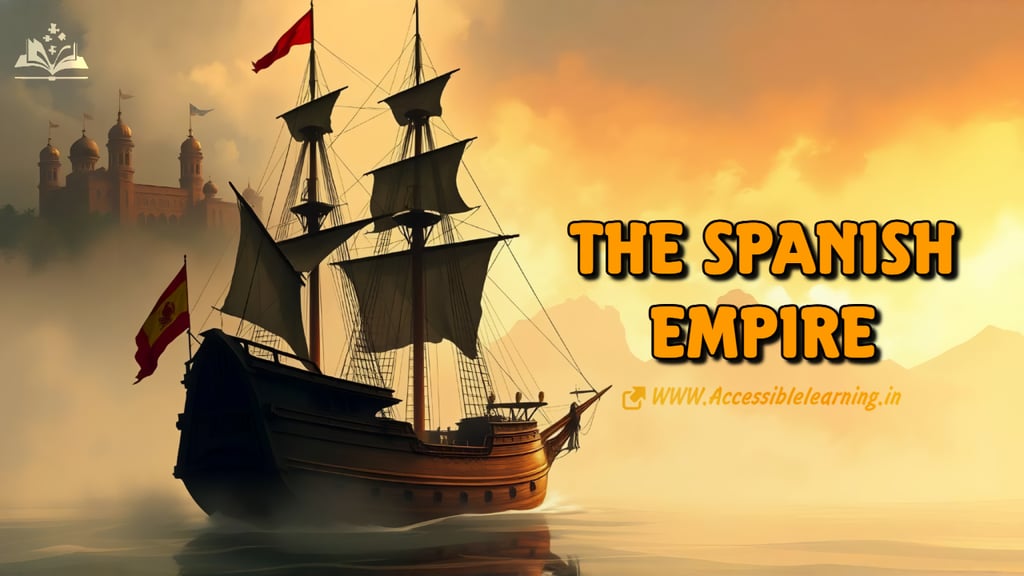

The Spanish Empire represents one of the most transformative political and cultural phenomena in world history. Emerging from the Iberian Peninsula, this imperial power created the first truly global empire, fundamentally reshaping international relations, economic systems, and cultural landscapes across multiple continents.
Historical Context and Formation
Precursor Developments: The Iberian Peninsula
Political Unification
The foundation of the Spanish Empire emerged from a complex political landscape. The marriage of Ferdinand II of Aragon and Isabella I of Castile in 1469 represented a critical political merger that would eventually create a unified Spanish kingdom. This union not only consolidated political power but also set the stage for unprecedented expansion.
Religious Dynamics
The Reconquista, completed in 1492 with the surrender of Granada, was more than a territorial conquest. It represented a profound religious and cultural transformation, marking the end of Islamic rule in the Iberian Peninsula and establishing Roman Catholicism as the dominant religious and cultural force.
Early Exploration and Conquest
Christopher Columbus and Initial Expeditions
On August 3, 1492, Christopher Columbus departed from Palos de la Frontera with three ships: the Niña, the Pinta, and the Santa María. His first voyage, sponsored by the Spanish monarchs, would fundamentally alter global understanding of geography and initiate an unprecedented era of exploration.
Key Expeditionary Achievements:
First documented European contact with the Caribbean islands
Establishment of initial Spanish settlements in the New World
Introduction of European technologies, livestock, and crops to the Americas
Initiation of the Columbian Exchange, a massive biological and cultural transfer
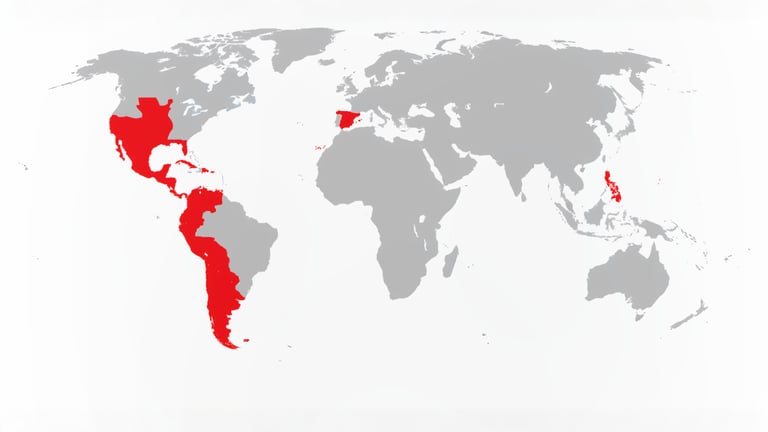

Territorial Expansion and Management
Administrative Structure
The Spanish Empire developed a sophisticated administrative system to manage its vast territories:
Viceroyalties: Large administrative divisions in the Americas
Viceroyalty of New Spain (modern-day Mexico and Central America)
Viceroyalty of Peru
Viceroyalty of New Granada
Viceroyalty of Rio de la Plata
Governance Mechanisms
Casa de Contratación (House of Trade): Regulated colonial commerce
Council of the Indies: Managed colonial administrative policies
Encomienda system: Initial method of indigenous labor organization
Economic Systems and Resource Extraction
Precious Metal Extraction
Spanish colonial economies were substantially driven by precious metal extraction:
Silver mines in Potosí (modern-day Bolivia)
Gold resources in Nueva Granada
Extensive mining operations across the Americas
These resources financed European wars, funded global trade networks, and transformed the global economic landscape.
Cultural & Social Transformation
Linguistic Impact
The official language in 21 countries
Spoken by approximately 580 million people worldwide
The second-most spoken native language globally
Religious Conversion
Extensive missionary activities
Establishment of educational institutions
Cultural assimilation through religious practices
Construction of numerous churches and religious structures
Demographic Changes
Forced migration of indigenous populations
Importation of African slaves
Extensive miscegenation and creation of new racial categories
Significant population movements and resettlements
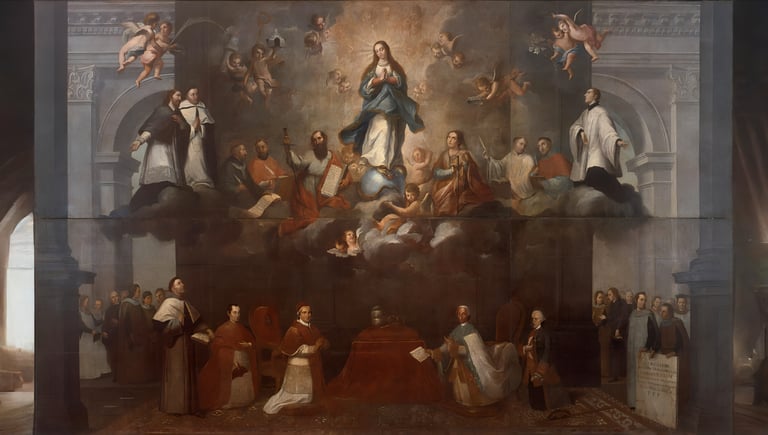

Technological and Scientific Contributions
Maritime Innovations
The Spanish Empire pioneered critical maritime technologies:
Advanced navigational instruments
Sophisticated shipbuilding techniques
Comprehensive maritime cartography
Development of global trade route networks
Agricultural and Biological Exchanges
The Columbian Exchange facilitated unprecedented biological transfers:
Introduction of European crops to the Americas
Transfer of American crops to Europe, Africa, and Asia
Exchange of livestock and agricultural technologies
Significant modifications to global ecological systems
Decline and Transformation
Factors Contributing to Imperial Dissolution
Napoleonic Wars (1803-1815)
Rising economic challenges
Emergence of independence movements
Competition from other European imperial powers
Internal political instability
Independence Movements
Simón Bolívar (Liberation of Venezuela, Colombia, Ecuador, Peru, and Bolivia)
José de San Martín (Argentine independence)
Miguel Hidalgo (Mexican independence)
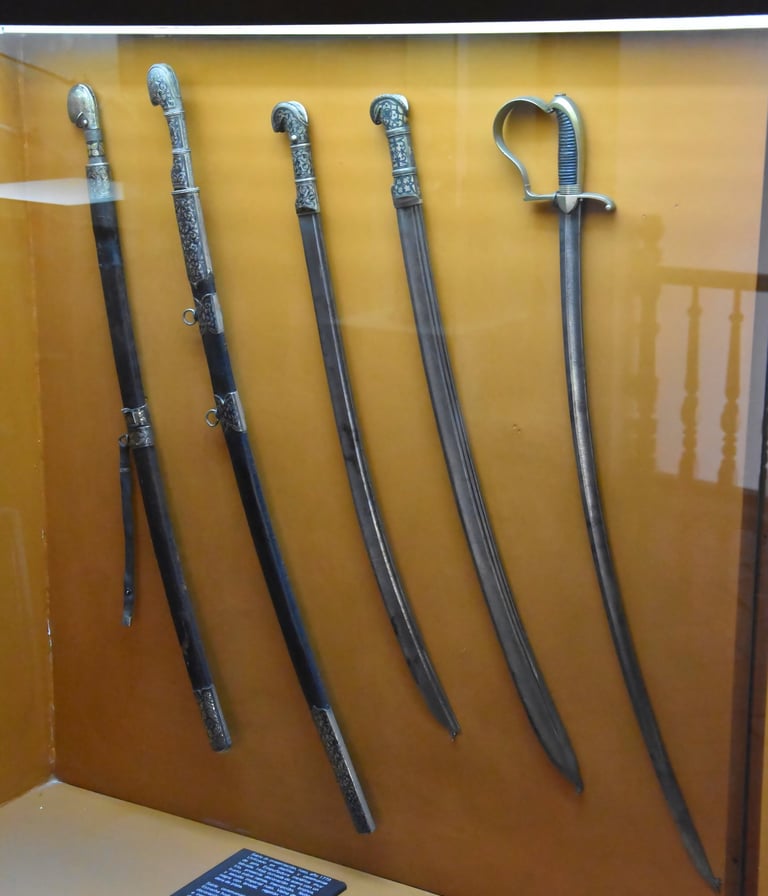

Frequently Asked Questions
When did the Spanish Empire begin and end?
The Spanish Empire began formally with the completion of the Reconquista and Columbus's first voyage in 1492. It gradually declined throughout the 19th century, with most American colonies gaining independence between 1810-1830. The empire effectively ended in 1898 with the loss of Cuba, Puerto Rico, Guam, and the Philippines following the Spanish-American War.
How large was the Spanish Empire at its peak?
At its territorial zenith in the late 18th century, the Spanish Empire controlled approximately 13% of the Earth's land surface across four continents. This made it one of the largest empires in world history, spanning territories in the Americas, Europe, Africa, Asia, and Oceania.
Which modern countries were once part of the Spanish Empire?
The Spanish Empire encompassed territories that today include Mexico, most of Central and South America (except Brazil), parts of the United States (including Florida, California, the Southwest, and briefly Louisiana), the Philippines, parts of Italy, the Netherlands, Portugal (1580-1640), territories in North Africa, and various islands in the Pacific and Caribbean.
What was the Columbian Exchange?
The Columbian Exchange refers to the widespread transfer of plants, animals, culture, human populations, technology, and ideas between the Americas, Europe, and Africa following Columbus's voyages. This exchange transformed agriculture, cuisine, and demographics globally, introducing potatoes, tomatoes, and corn to Europe while bringing wheat, horses, and cattle to the Americas.
How did the Spanish Empire acquire its wealth?
Silver and gold extraction from mines in Peru, Bolivia, and Mexico
Agricultural production, including sugar, tobacco, and cacao
Trade monopolies through the Casa de Contratación
Various forms of tribute and taxation on indigenous populations
The Manila Galleon trade connecting Asia with the Americas
What was the "Black Legend" regarding the Spanish Empire?
The "Black Legend" refers to an anti-Spanish propaganda campaign that emerged during the 16th-17th centuries, portraying Spanish colonial practices as exceptionally cruel and barbaric compared to other European powers. While Spanish colonization did involve significant violence and oppression, modern historians view the Black Legend as partially exaggerated propaganda spread by rival European nations.
How did Spain govern its vast empire?
Spain governed its territories through a complex hierarchy:
Council of the Indies in Spain created laws and policies
Viceroyalties were major administrative regions governed by viceroys representing the monarch
Audiencias served as high courts and administrative bodies
Local governance occurred through municipalities (cabildos)
The Catholic Church provided additional administrative support and social services
What was the social structure in Spanish colonies?
Spanish colonial society developed a complex social hierarchy based partially on racial categories:
Peninsulares: Spanish-born individuals at the top of society
Criollos: Spanish descendants born in the Americas
Mestizos: Mixed Spanish and indigenous ancestry
Indigenous peoples: Original inhabitants with varying legal statuses
Enslaved and free Africans and their descendants This social stratification influenced access to education, employment, and political power.
How did the Spanish Empire influence language globally?
The Spanish language spread throughout the empire, becoming one of the world's most widely spoken languages. Today, Spanish is the official language in 21 countries and is spoken by approximately 580 million people globally. Regional variations developed distinctive vocabularies, accents, and grammatical features.
What architectural legacy did the Spanish Empire leave?
Spanish colonial architecture created a distinctive built environment across the empire, characterized by
Imposing Catholic cathedrals and churches
Central plazas surrounded by government buildings
Grid-pattern city layouts
Fortifications and defensive structures
Haciendas and plantations
Fusion styles incorporating indigenous design elements Many colonial-era buildings are now UNESCO World Heritage sites.
How did Spanish silver affect the global economy?
Spanish American silver production revolutionized the global economy by:
Providing unprecedented monetary liquidity for international trade
Facilitating direct trade with China and other Asian economies
Contributing to price inflation across Europe (the "Price Revolution")
Funding Spain's military and political ambitions in Europe
Creating new patterns of global commerce and finance
What was the "Price Revolution" caused by the Spanish Empire?
The Price Revolution refers to the prolonged period of inflation in Europe during the 16th and early 17th centuries, characterized by a 200-400% increase in prices. Historians attribute this partially to the influx of American silver and gold into European economies, which increased money supply without corresponding increases in production.
Why did the Spanish Empire decline?
Overextension of military resources in European conflicts
Growing competition from other European powers
Administrative inefficiencies and corruption
Economic challenges including inflation and debt
Rising nationalist and independence movements
The impact of the Napoleonic Wars (1803-1815)
What enduring impacts did the Spanish Empire have on global civilization?
Linguistic and cultural connections across continents
Religious landscapes transformed by Catholic influence
Legal systems based on Spanish law in former colonies
Urban planning and architectural traditions
Agricultural practices and food cultures
Mixed cultural identities reflecting colonial interactions
Early foundations of globalized trade networks
How does modern Spain relate to its imperial past?
Modern Spain has a complex relationship with its imperial history, acknowledging both accomplishments and atrocities. This relationship includes:
Cultural and linguistic connections with former colonies
Shared historical narratives and commemorations
Debates about historical responsibility and reparations
Diplomatic and economic relationships with former colonies
Cultural exchange programs and educational initiatives
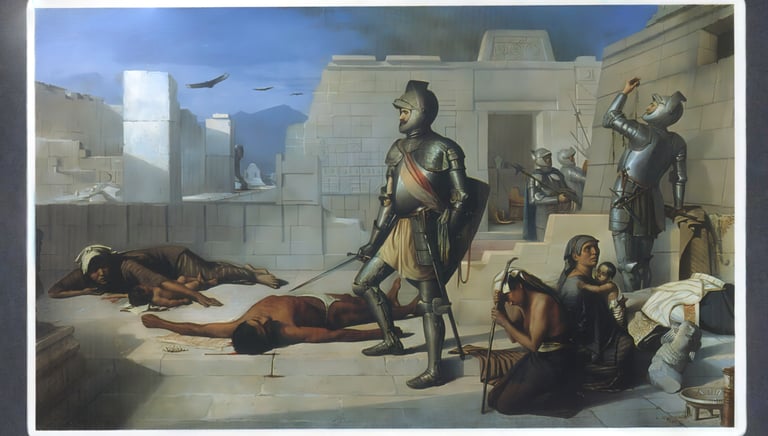

Global Legacy
The Spanish Empire's influence extends far beyond its historical timeline:
Establishment of global trade networks
Linguistic and cultural proliferation
Introduction of new administrative and legal frameworks
Facilitation of unprecedented cultural exchanges
The Spanish Empire represents a complex, multifaceted historical phenomenon that transcends simple narratives of conquest. It was a transformative force that reshaped global interactions, created new cultural syntheses, and laid foundations for modern international systems.
Subscribe To Our Newsletter
All © Copyright reserved by Accessible-Learning Hub
| Terms & Conditions
Knowledge is power. Learn with Us. 📚


